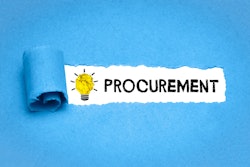
With peak season upon us, the stakes for e-commerce and retail operations have never been higher. This isn’t merely a few weeks of intense sales; it’s an all-encompassing event that defines the year's performance, customer satisfaction and future loyalty. Peak season, particularly the Black Friday and Cyber Monday period, is an operations-intensive “final match” for retailers, a time when preparation and agility are key.
As retailers navigate this season, ensuring a focus on data-driven forecasting, seamless stock management and the right mix of technology and teamwork is key to a successful peak.
Accurate Forecasting as the Foundation
Peak season success begins with detailed, data-driven forecasting months in advance. Beyond predicting general demand, a strong forecast digs deeper, identifying specific SKUs likely to see spikes. Knowing exactly which products will drive traffic allows teams to place popular items strategically near packing stations and even pre-pack common combinations to reduce picking times.
Frequent updates to forecasts based on real-time sales help anticipate sudden changes. Adjusting for demand deviations during peak—such as promotional influences or unplanned increases in order volume—can also prevent bottlenecks and enable retailers to pivot as needed.
Mastering Stock Availability and Placement
Out-of-stock scenarios are one of the most preventable issues, but they require close coordination with suppliers and a strong inventory management strategy. Aligning stock with promotional calendars and placing high-demand items across multiple warehouses minimizes the risk of stockouts, even during peak days.
Stock planning for peak season isn’t just about quantity; it’s also about location. Poorly positioned items or unanticipated demand shifts can create a backlog that impacts delivery speed and customer satisfaction. Reducing the chances of split shipments with efficient stock positioning and allocation can help improve delivery timelines and reduce shipping costs, all while meeting customer expectations.
Scaling Fulfillment and Automating Where Possible
Meeting increased order volumes requires the right combination of manpower and automation. Automation streamlines processes, increases throughput and reduces the dependency on temporary seasonal hires. Yet, peak season demands more than just automation; retailers should also ensure that manual fulfillment processes are optimized.
Simple strategies like redesigning pick paths, updating bin locations, and increasing batch efficiency can make it easier for fulfillment teams to move fast and meet demand without increasing headcount significantly. Taking advantage of high-efficiency tools to maximize output per worker also enables retailers to meet deadlines even in shorter time frames.
Choosing Couriers Wisely and Building Flexibility
The “last mile” is one of the most visible parts of the customer journey. This season, choosing the right courier is crucial. Couriers need to be part of the Peak Season strategy well before orders start to roll in. Retailers should communicate forecasted volumes, plan collection schedules, and coordinate closely to ensure quick and reliable handoffs.
It’s wise to build flexibility into courier options by working with multiple providers when possible. If demand surges or delays occur with one courier, the ability to pivot to another provider on short notice helps maintain service quality and avoid customer dissatisfaction. Ideally, retailers can leverage technology to monitor courier performance in real-time and shift volume as needed, ensuring deliveries continue smoothly and customers receive their orders on time.
Preparing for Peak Returns
With the rise in orders, retailers can anticipate a corresponding increase in returns post-peak. Yet, many overlook the need to gear up for returns in the same way they prepare for outbound shipments. Dedicated returns teams and well-structured return processing workflows can help prevent bottlenecks and keep customers happy by processing refunds quickly.
Using data to anticipate return rates for specific items, or even creating streamlined return workflows for high-volume items, can prevent backups in January and maintain a positive customer experience. The best retailers make the returns process as efficient and customer friendly as their outbound processes, knowing that a good returns experience translates to higher customer loyalty.
Continuous Improvement: Post-Peak Analysis
Finally, an essential part of any peak season playbook is a thorough post-peak review. By examining what went well and identifying areas for improvement, retailers can apply these lessons to next year’s planning. Did certain promotions perform better than expected? Were some SKUs surprisingly high in demand? Did any couriers struggle with volume? A close look at these elements helps set retailers up for an even more efficient, effective peak season next year.
With the right preparation and a playbook focused on data, operational efficiency and customer satisfaction, this peak season can become a powerful growth opportunity. By keeping operations smooth and customers satisfied, retailers not only capitalize on holiday demand but build trust and loyalty that will pay dividends throughout the year.
















![Pros To Know 2026 [color]](https://img.sdcexec.com/mindful/acbm/workspaces/default/uploads/2025/08/prostoknow-2026-color.mduFvhpgMk.png?ar=16%3A9&auto=format%2Ccompress&bg=fff&fill-color=fff&fit=fill&h=135&q=70&w=240)